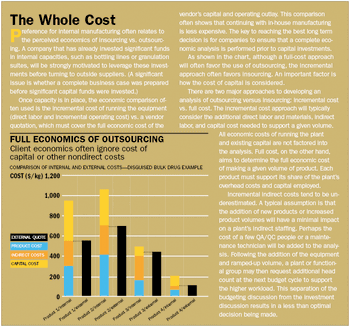
Outsourcing saves money-except when it doesn't. Here's how to decide what to do.

Outsourcing saves money-except when it doesn't. Here's how to decide what to do.

The pharmaceutical industry is experiencing unprecedented late-stage setbacks, product recalls, and difficulties in generating high-quality drug candidates. The problems are not specific to any one company or research effort but rather a result of the industry's limited knowledge of biology and chemistry.

In a tight market, pharma companies are asking themselves: "How can we get more from scarce resources?" As a result, R&D and sales/marketing expenditures are under increased scrutiny-and they should be. Both areas consume significant resources (about 25 percent of revenues combined) have experienced rapid growth, and their results have been difficult to quantify. But to make the most of both human and non-human assets, management must first understand how those assets are currently allocated, how to make them more productive, and if there are better ways to deploy them. That substantial task will be further exacerbated as the industry

Pharma mergers have hardly brought runaway success. Yet, judging from industry CEOs' public pronouncements, on the horizon is another merger and acquisition wave that will challenge both participants and spectators. The M&A game of the future may diverge drastically from strategies of the past, as multiple acquirers begin to target specific therapeutic franchises rather than whole companies.

Published: August 1st 2001 | Updated:

Published: February 1st 2002 | Updated:

Published: September 1st 2008 | Updated:

Published: April 1st 2003 | Updated: